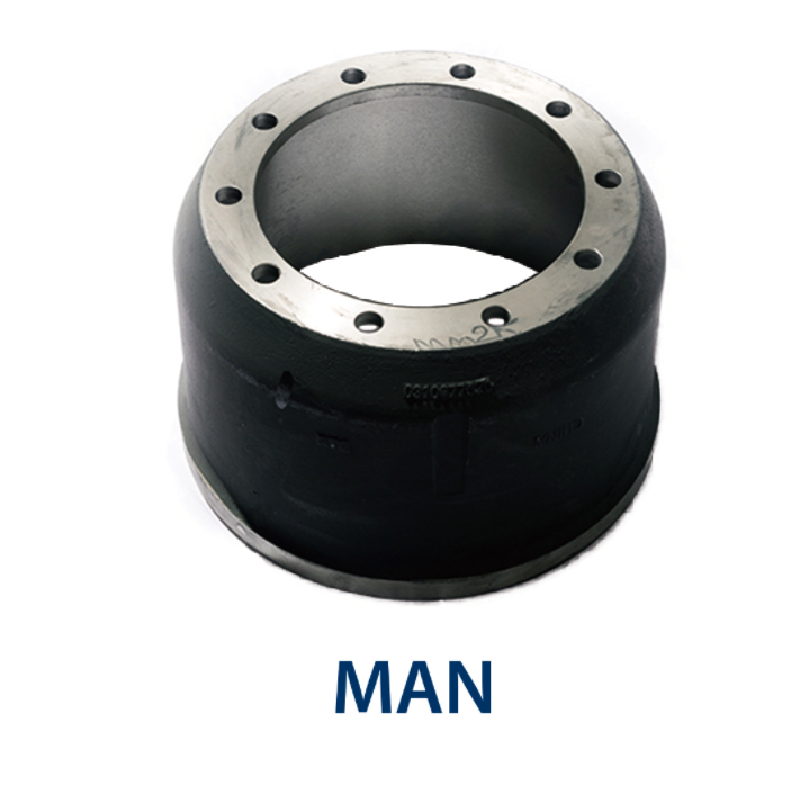Nov . 09, 2024 15:57 Back to list
Understanding the Mechanics and Functionality of Air Brake Drums in Vehicles
Understanding Air Brake Drums Essential Components in Vehicle Safety
Air brake systems are a crucial part of modern heavy-duty vehicles, ensuring the safe and efficient operation of trucks, buses, and trailers. Among the critical components of these systems are air brake drums—mechanical devices that play a vital role in how vehicles come to a stop. This article delves into the details of air brake drums, their function, types, maintenance, and significance in vehicle safety.
What is an Air Brake Drum?
An air brake drum is a cylindrical metal component that forms part of the drum brake system, which converts the energy from the air brake system into mechanical energy to slow down or stop the vehicle. When the driver applies the brakes, compressed air is sent to the brake chambers, pushing a diaphragm that moves the pushrod. This action forces the brake shoes against the inner surface of the drum, creating friction that slows the rotation of the wheels.
The Functionality of Air Brake Drums
Air brake drums are designed to efficiently dissipate heat generated during braking. As the friction between the brake shoes and the drum occurs, the temperature inside the drum can soar, potentially reaching critical levels if not properly managed. This heat needs to be dissipated quickly to avoid brake fade, a condition where the braking power diminishes due to overheating. Consequently, the material composition and design of air brake drums are vital in ensuring they can withstand high temperatures while maintaining performance.
The effectiveness of an air brake drum also depends on its size and weight. Larger drums provide more surface area for contact, which can enhance braking efficiency. However, they also add weight to the vehicle, which must be balanced with the performance needs and load capacity. Manufacturers typically conduct extensive testing to determine the optimal size for specific vehicle applications.
Types of Air Brake Drums
air brake drum

There are two primary types of air brake drums cast iron drums and composite drums.
1. Cast Iron Drums These are the traditional choice for most heavy-duty vehicles. They are known for their durability and ability to withstand high temperatures, making them suitable for heavy-load applications. Cast iron drums are robust but tend to be heavier, which can impact fuel efficiency.
2. Composite Drums Emerging technologies have led to the development of composite air brake drums, which are lighter than their cast iron counterparts. These drums often combine materials such as aluminum and reinforced plastics, offering advantages in weight reduction while maintaining structural integrity. Lighter drums can improve the vehicle's overall efficiency, making them increasingly popular in modern trucking applications.
Maintenance and Safety Considerations
Proper maintenance of air brake drums is essential to ensure optimal performance and safety. Regular inspections should include checking for signs of wear, such as grooves, cracks, or warping. The brake shoes should also be inspected for wear, as they need to be replaced periodically to ensure proper contact with the drum. If brake drums are worn beyond their limits, they must be resurfaced or replaced to prevent braking failure.
Additionally, it’s crucial to keep the braking system free from moisture and contaminants. Brake drum assemblies should be kept clean, and the use of quality brake fluid can prolong the life of the components. Regular maintenance checks can help identify potential issues before they lead to severe failures.
Conclusion
Air brake drums are a fundamental component of a vehicle’s braking system, crucial for ensuring safe and effective vehicle operation. Understanding their mechanics, types, and maintenance needs is essential for vehicle operators and fleet managers alike. By investing time and resources into proper maintenance and replacing worn components, operators can significantly enhance the safety and reliability of their vehicles, ultimately protecting both drivers and the public. As the industry continues to evolve, innovations in air brake technology, including advancements in drum materials and designs, will further improve braking efficiency and safety for all heavy-duty vehicles on the road.
-
Scania Brake Drums: OEM Quality for Optimal Safety & Durability
NewsAug.16,2025
-
R.V.I: Advanced Remote Visual Inspection for Precision
NewsAug.15,2025
-
Discover HYUNDA: Innovative Vehicles, Equipment & Solutions
NewsAug.14,2025
-
R.V.I: Unlock Advanced Insights & Real-time Performance
NewsAug.13,2025
-
Kamaz Brake Drum: Durable & Reliable for Heavy Duty Trucks
NewsAug.12,2025
-
Heavy Duty Iveco Brake Drum - Premium Quality & Safety
NewsAug.11,2025
